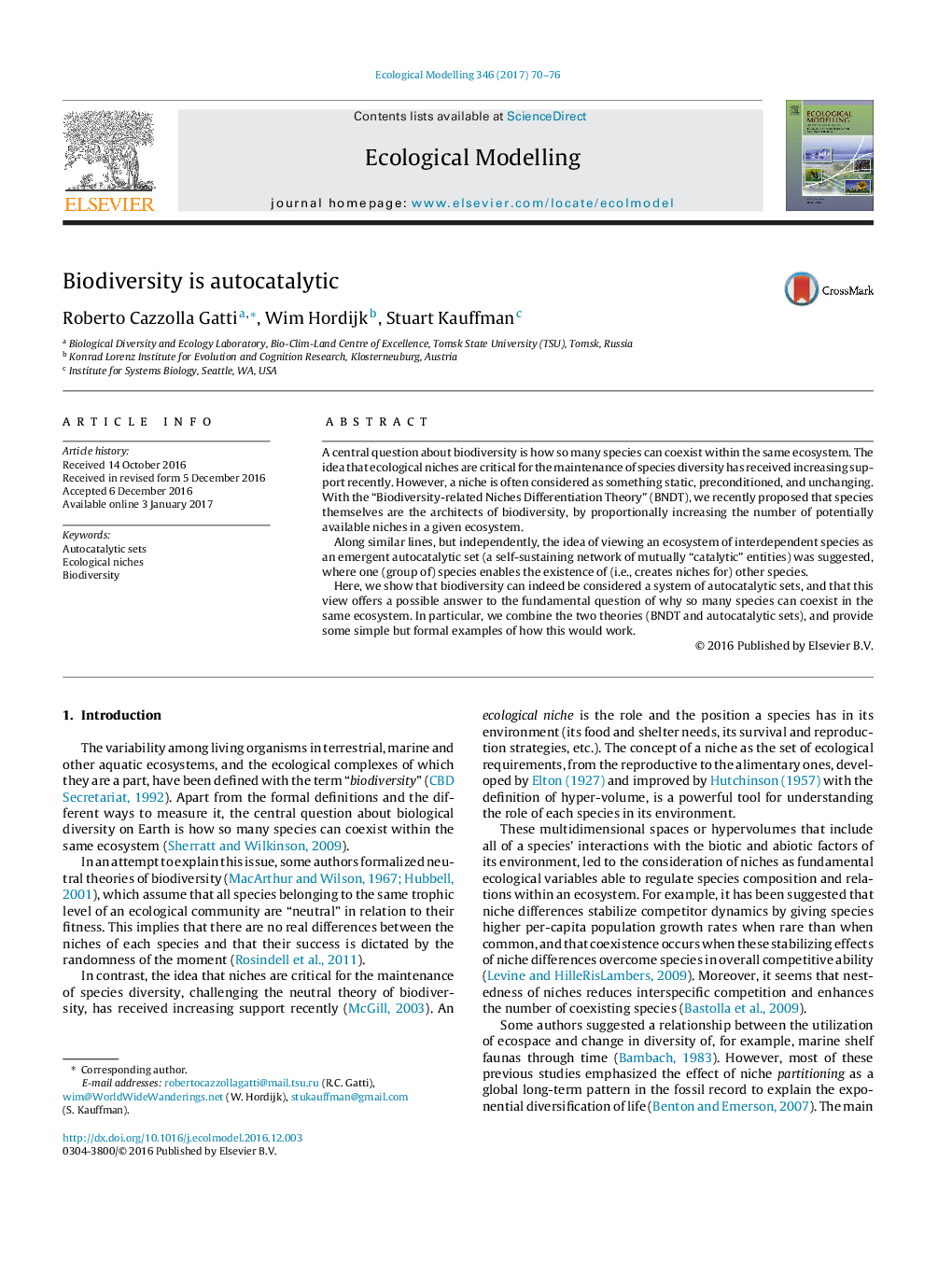| Article ID | Journal | Published Year | Pages | File Type |
|---|---|---|---|---|
| 5742346 | Ecological Modelling | 2017 | 7 Pages |
â¢Biodiversity can be considered a system of autocatalytic sets.â¢This view offers a possible answer to the fundamental question of why so many species can coexist in the same ecosystem.â¢We combine the “Biodiversity-related Niches Differentation Theory” (BNDT) with that of “Reflexively Autocatalytic and Food-generated Sets” (RAFs) to support our argument.
A central question about biodiversity is how so many species can coexist within the same ecosystem. The idea that ecological niches are critical for the maintenance of species diversity has received increasing support recently. However, a niche is often considered as something static, preconditioned, and unchanging. With the “Biodiversity-related Niches Differentiation Theory” (BNDT), we recently proposed that species themselves are the architects of biodiversity, by proportionally increasing the number of potentially available niches in a given ecosystem.Along similar lines, but independently, the idea of viewing an ecosystem of interdependent species as an emergent autocatalytic set (a self-sustaining network of mutually “catalytic” entities) was suggested, where one (group of) species enables the existence of (i.e., creates niches for) other species.Here, we show that biodiversity can indeed be considered a system of autocatalytic sets, and that this view offers a possible answer to the fundamental question of why so many species can coexist in the same ecosystem. In particular, we combine the two theories (BNDT and autocatalytic sets), and provide some simple but formal examples of how this would work.
